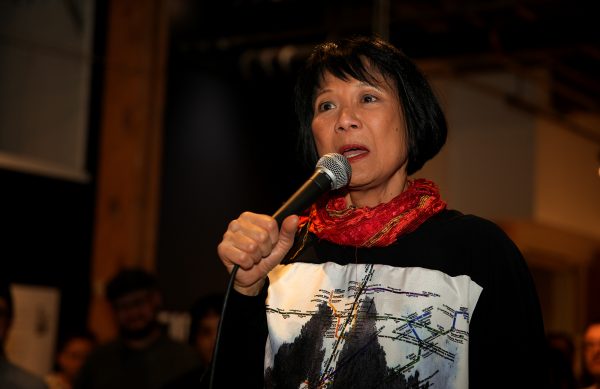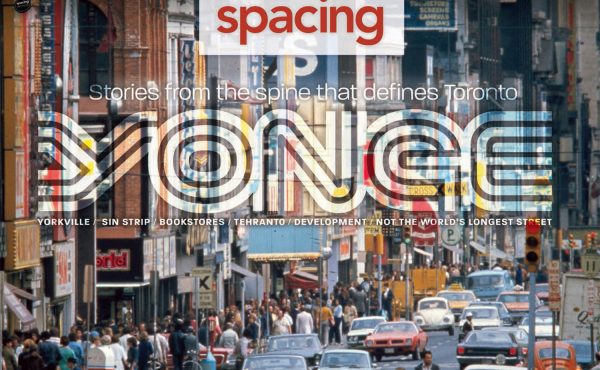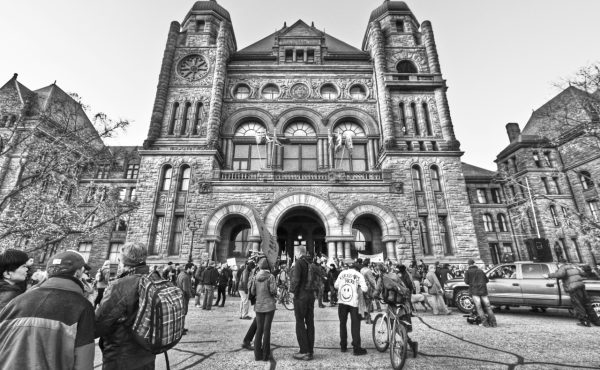With the final council session of the year now in the rear-view mirror, Mayor Olivia Chow is spending part of this week powering through year-end interviews with City Hall reporters. Although she expended some of her political capital on files like Ontario Place (she agreed to halt the planning review of the contentious Therme spa application) and the renaming of Centennial Stadium after the late mayor Rob Ford, her half-year in office has been marked by far more high points that low points, among them a multi-billion-dollar deal with Queen’s Park and the launch of an ambitious affordable housing plan that will see the City itself leading several new projects.
I sat down with Chow in her office to discuss her thinking about public space, transit, and housing, among other issues that will be on her agenda in 2024.
Spacing: We’ve had a lot of talk about the deterioration of public space in the city over the last 12 years. If you had to make a short list three or four things that you think are really in need of improvement in the public realm, what would be on that list? What would be at the top of your list?
Chow: Well, here’s one that I can’t do, but I want to do: the Astral [Media] contract. We can’t get out of it legally, but there must be a way that would actually make it work better. Do you want me to go into the beauty of things or how roads should fit or not fit?
Spacing: Whatever you think would be at the top of your list.
Chow: That one is pretty important. Another one is the washrooms. There’s now a plan for winterizing, right, but is there a way to do more? Like how about just some new public ones? I think as a city, Toronto compared to other major cities I’ve seen, we really don’t think through any of that kind of day-to-day stuff, which is pretty fundamental, right? Compared to other cities I’ve been in, that is not a problem. [Public washrooms] are not just in trails and parks.
On some of the roads in the suburbs, some of the space is windy, grey, so there needs to be a think through especially when we’re rebuilding, developing, a lot of those areas. How do you make the public realm a lot friendlier for pedestrians or for younger kids, older seniors. Every morning I get an alert from the police – traffic accidents, people killed whether by gun violence or stabbing. A huge number of pedestrians, especially in the last two months when it’s darker and more people being hit when crossing intersections. The Vision Zero piece, especially in between big blocks in the suburbs, people just getting killed. That’s worrisome. There has to be some ways to do better.
Spacing: During the pandemic, we saw a lot of big cities make really substantial changes to road allowance, creating much more generous transit priority lanes, more bike lanes, reduced vehicle access. Toronto has amped up its bike lane construction, with projects like College Street. When you go back to voters in 2026, where do you want to see this file? What do you want to be able to point to and say, “This is how we’ve changed the way we manage the roads in the city.”
Chow: We’re beginning to get better. Like the `walk first’ timing [at intersections] helps. Now you actually have enough time to cross University. It would be better if a family on a weekend wanted to take their kids out to ride somewhere or walk or run and not worry that it’s hard for them to get out. Most of the time they would be able to find spaces where people can come and enjoy the street, especially, say, on a Sunday. We already do that [with street festivals], right? I saw what was happening on Lakeshore during the pandemic, ActiveTO. Is that possible? I don’t know.
Spacing: Well, we know what happened with the Lakeshore program. Do you want to drive something like that? Whenever the streets are open to people to just walk on, there’s a lot of enthusiasm, but there’s a lot of push-back from Transportation Services. So where do you stand? Do you want a lot more? Do you want a little bit more?
Chow: I need to find a happy medium. I understand congestion, especially during the weekdays as people are working in the financial district. That’s a different story. I’m not talking about that. I’m talking more about weekends. How do we open up some of the areas can we connect? We do have a lot of paths and bike lanes and all of that. It’s just that some of them are not connected. And people don’t know where they are. It’s confusing.
Spacing: Thanks to the New Deal, the city no longer has responsibility for operating and maintaining the Gardiner and the Don Valley Parkway, which will have a dramatic impact on the capital budget. For the transportation capital budget, those highways accounted for 40% over 10 years. Now that you’ve got this extra capital, what is your vision of how to use that that money?
Chow: Well, on things that impact people most, right? Right now, [the city is] replacing only two ferries, not all of them. Why not? Millions of people use them. In the capital budget, there are things that are unfunded, even those that impact a huge number of people. But those are not necessarily people that voice their opinion very much, right? Public transit. Again, people don’t necessarily voice their opinions. There could be other bus routes that connect people to conservation authorities or different parks. Those small, modest things that have been delayed for a long time, including potholes, we will now have a chance of getting into the capital budget.
Spacing: Let me put you on the spot about transit. There are several major unfunded transit projects. What are your priorities?
Chow: The Waterfront LRT, the Eglinton East LRT. There’s huge development on the waterfront. Look at what happened on the western waterfront. The Lakeshore West LRT never got funded, right? And look at it now. Lakeshore and the Gardiner are just packed with all those condos that came in all along the waterfront. There’s no streetcar service whatsoever. At the time, we protected the Lakeshore right-of-way, and we can still do the Waterfront West LRT. It’s just much harder now. It’s a lot easier as we are developing on the east side for us to get ahead of it.
Spacing: You’ve been having good conversations with your counterparts in the federal government and the provincial government. Do you get a sense from them that they’re willing to make those significant capital investments for both those projects? Do you think is this something that’s going to come before the end of your term?
Chow: I hope so. I don’t know. Getting those levels of government back into housing took several decades. [We have to] get them to understand it’s not subways, and it doesn’t have to be that slow or expensive, like the Crosstown
Spacing: On housing, you made a great start. I think everybody appreciated that you were quick out of the gate. Where do you want to be with your housing program when you go back to the voters? Do you want to have shovels in the ground?
Chow: Yes. I want to see [the Multi-unit Residential Acquisition fund] be more successful, with a lot more money in it. We are actually buying some buildings, right? We can immediately create a lot of affordable housing. I want [to invest] massively, at least $100 million, in it, if not more. We’re working with some foundation folks to boost up the money. We’re looking at a list of other buildings we want to buy. In the meantime, let’s start building. A lot of lessons were learned in the past. Now we have one person in charge [of affordable housing development] instead of several departments. We’re cleaning up the planning process, and speeding it up. So we hope to get a lot more shovels in the ground by 2026.
Spacing: One of the things that was problematic with Housing Now is that the city didn’t have control over financing approval decisions made at CMHC.
Chow: We do now. I said to the feds, look, individual applications make no sense because it was just, wait forever. Why don’t you give us a chunk of money, we spent it, and then another chunk, right? We could take that money and immediately put it into projects. We’ve identified the projects and we’ve identified the land, which means the minute the money comes through, the provincial money will [also] come through, but it’s not by application. The province already said yes, the feds are about to say yes. You combine it and you’re looking at about $800 million, which is not a bad place to start for the next two years.
Is it enough? Nope. I will go and seek more, like rapid housing for supportive housing, because we have 27,000 people waiting for supportive housing. We need to get folks off the street as much as we can. And if we could get the federal government to take responsibility for refugees, that would make it a lot easier for us to deal with homeless folks.
This interview has been edited and condensed for length
photo by Julian Zakrzewski





